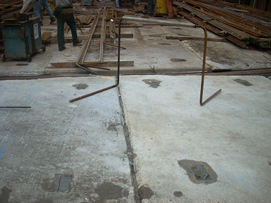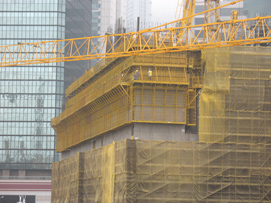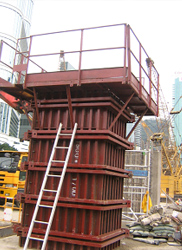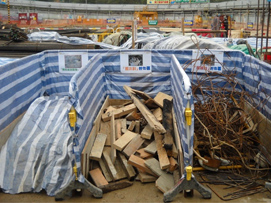Construction Waste Management
According to records of Environment Protection Department (EPD), about 40 percent of the total waste intake by landfills come from the construction industry. The capacities of existing public fills and landfills are shrinking rapidly and effective construction waste management is essential to lighten the landfill demand.
A good waste management plan is a set of strategies and overall framework to minimize the generation of construction waste on site and to divert waste away from public fills and landfills mainly by means of reusing and recycling. Examples of the strategies include:
Use of prefabricated materials to minimize construction waste generated on site during fabrication.
Substitution of traditional timber formwork by metal formwork to save timber consumption up to 30 percent.
On-site sorting to separate inert materials (e.g. excavated rock and soil) from non-inert materials (e.g. bamboo, timber, organic materials) before disposal. After sorting, inert materials suitable for land reclamation and site formation are disposed of at public fills for subsequent reuse.

Use of reusable precast concrete paving panels for temporary site working areas.
Use of metal wall panel formworks to reduce the use of timber resource.
Use of metal column formwork
On site sorting area for non-inert materials to being recycled before disposal.














_EN_85x50.png)























